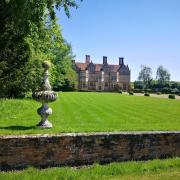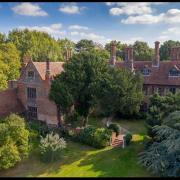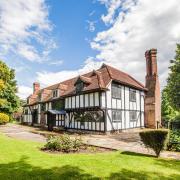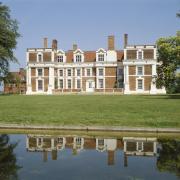It's late on a Saturday night and noisy revellers throng the town centres. All are having fun, but anyone whose drunkenness turns disorderly may get a free lift to a police station to spend the night sobering up in a cell. Our rural ancestors in the 18th and 19th centuries had to contend with similar problems. They didn't have police stations, so detained louts in a small village lock-up.

Back in those days, long-suffering parish constables had the unenviable and often unpaid job of dealing with miscreants. As an obligatory position, someone in the parish had to take it on. The men appointed to constable may have resented the imposition, especially as they risked being attacked by an offender without the organised backup of a modern police force.

Shoemaker and constable Henry Trigg was killed by robbers in 1814, albeit not in the line of his parish duty. He tackled two intruders in his shop, bloodying one with a staff before the other shot him dead.
Until an offender could be taken to the town magistrate they'd be held in a lock-up. These dark mini-prisons were also known as a round house or blind house, and in Essex as a cage. Uncomfortable and often poorly ventilated, the best offered a bench and some straw to lie on, plus a chamber pot, while others just had a stone seat to sit on.
Even in a booze fuelled haze they were unpleasant places to spend the night, being cold and damp much of the year. Inmates didn't always make it to the magistrate if they escaped or died. Deaths were mostly from the cold, but sometimes from accidentally setting light to straw bedding. Family and friends couldn't always be relied on to help. Glad to get rid of a severe nuisance, they might ply an inmate with alcohol rather than food in the hope that his turning up drunk or hungover in front of the magistrate would result in a severer sentence!

Walk past the pretty timber framed cottages of Cage Row in Bradwell-on-Sea and you'll come to a small brick building that’s been there since the 1700s. The stout door with a barred window gives it away as once being a lock-up. It did double duty as the place to flog criminals – an iron bar to hold a person's wrists in place fitted into holes in the door posts.
Over in Braintree there's a passage next to The Chophouse restaurant where another brick lock-up stands. Built around 1840, it's fairly long and has a hard seat along the length to fit several prisoners. Unlike many rural prisons which were in use for over a century, this one had a short life as a cage and was put into use as an ammunition store in 1875.

While most cages are standalone buildings, Thaxted went for a different approach. Its impressive three storey white Guildhall dating back to the 1400s was later modified to include a lock-up, probably sometime in the 18th century. A low door can be found down one side of the ground floor, with a barred window above it.
Perhaps to the relief of put upon parish constables, in 1839 the County Police Act led to the formation of police forces and more stations with cells, starting the gradual demise of village lock-ups. Many of the hundreds built around England have since disappeared, leaving only a few dozen whose heritage status is typically recognised by being Grade II listed. Easily passed by unnoticed, they're a reminder that society has always found ways to deal with the same struggles.






























